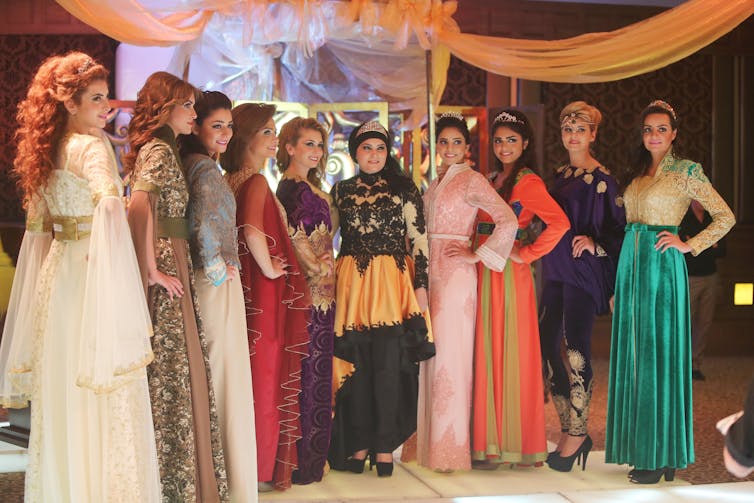(The Conversation) — Worn by some Muslim women, an abaya is a long, loose-fitting, robelike garment that covers the entire body, except for the face, hands and feet. Through the abaya, women can express their religious identity and dedication to following Islamic guidelines regarding modest attire.
In more conservative social circles, the abaya is part of expected dress conforming to social norms and culture. In Saudi Arabia, for example, women were required to wear an abaya until 2018.
Worn over everyday clothing, the abaya is typically paired with a headscarf to cover the hair. This garment finds its primary usage in North Africa; the Horn of Africa, which includes countries such as Somalia and Somaliland; and the Arabian Peninsula.
Traditionally, the abaya was black or dark in color, reflecting a conservative approach. In present times, however, its design and aesthetics can vary between regions and communities. In some places, abayas may feature intricate embroidery that is specific to that locality. In others, the choice of fabric and the style of draping can differ, allowing women to align their abaya with regional fashion preferences. These regional variations offer women a way to express their cultural identity while respecting religious norms.
In fact, modern abayas – offering a wide spectrum of colors and innovative designs – have become a fashion statement. These designer abayas offer a departure from the conventional plain styles and incorporate innovative patterns, like floral prints and geometric designs, and even metallic embellishments such as belts and pins.

Models displaying abayas during a fashion show in Amman, Jordan, in 2015.
Jordan Pix/Getty Images
Why it matters
In societies where Muslims constitute a minority, the abaya takes on an added layer of significance. Muslim women can use the abaya as a means to connect with their cultural heritage. But it has also drawn criticism.
Critics argue that religious garments like the abaya represent a form of religious control over women’s bodies and a reinforcement of patriarchy.
Other critics of abayas say they object to public symbols of religious identity. Some individuals who advocate for a strong separation between religious and state affairs argue that religious expressions should be limited to private settings. France recently banned the wearing of abayas in its public schools, arguing that it was in conflict with secular principles, which has caused an uproar.
Others, however, say these laws predominantly affect the country’s Muslim minority. This is because Christians do not typically express their religious identity through attire. Even when they do, Christianity often prioritizes belief over outward religious practices, as opposed to mainstream Islam.
These critiques underscore the ongoing discussion surrounding the tension between religious practices and individual rights in diverse, multicultural societies.
(Armin Langer, Assistant Professor of European Studies, University of Florida. The views expressed in this commentary do not necessarily reflect those of Religion News Service.)
![]()





